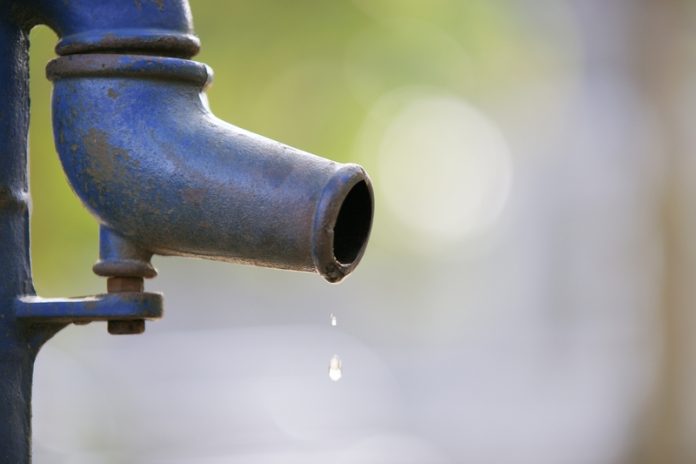Pavel Misiga, Head of the Water Unit at the European Commission’s Environment DG, outlines how the EU Water Framework Directive can help to ensure clean water in sufficient quantities for people and nature
The main aim of EU water policy is to ensure that throughout Europe a sufficient quantity of good quality water is available for people’s needs, the economy and for the environment. Since the 1970s, through a variety of measures, the EU has worked hard to create an effective and coherent water policy.
The EU Water Framework Directive (WFD), adopted in 2000, takes a pioneering approach to protect water-based on natural geographical and hydrological formations: river basins. Integrated river basin management adopts a holistic approach to protecting the whole body of water, its source, tributaries, and river mouth. The Directive requires Member States to draw up river basin management plans to safeguard each of the 110 river basin districts, 40 of which are international and cross borders, covering about 60% of EU territory. It is implemented through 6-year recurring cycles, the first of which covers the period 2009-2015.
The overall aim of the WFD is to achieve ‘good status’ for all EU waters, including fresh, transitional (river mouths) and coastal waters by 2015. ‘Good status’ means both ‘good ecological status’ and ‘good chemical status’. But in spite of improvements in recent years, achieving this goal is still some way off with only 53% of surface water bodies at present in the good ecological state.
European Water policy has improved water protection. Problems of quantity and quality are being addressed. As a result, most Europeans can safely drink tap water and swim in thousands of coastal areas, rivers and lakes across the EU.
However, progress is still too slow and Member States need to step up actions to preserve water resources. The Commission’s 4th WFD implementation report published on 9 March 20151 sets out a series of recommendations for the way forward. At the 4th European Water Conference held in Brussels on 23-24 March 20152, Karmenu Vella, EU Commissioner for the Environment, Maritime Affairs and Fisheries conveyed the report’s key recommendations for the Member States.
- First and foremost, it is necessary to improve the monitoring of water status;
- Diffuse pollution from agriculture is a significant pressure which affects 90% of river basins in the EU.
- Stricter controls should be imposed, in particular with regard to the use of agricultural chemicals such as fertiliser and pesticides, in order to tackle this pressing problem;
- Industrial pollution needs to be better controlled by adjusting permits to reflect the achievement of the water policy objectives;
- Water bodies have been negatively affected by too many changes to their shape and flow due to, for example, flood protection, hydropower development, navigation, etc. Removing or mitigating these man-made pressures is necessary to restore the aquatic environment and its ecosystems;
- Water scarcity remains an issue, and not just in the South. Water abstraction needs to be controlled in order to achieve a good balance between availability and use. In this context in particular, more attention must be paid to the principle of cost recovery by applying, for example, water pricing or other ways to incentivise efficient use of water;
- Greater uptake of under-used EU funds was also recommended.
How does climate change impact the quality of water?
In the coming decades, climate change will pose a major challenge for water management across the EU. Higher water temperatures and changes in extremes, including floods and droughts, are projected to affect water quality and exacerbate many forms of water pollution.
Droughts and increased water scarcity are expected to affect larger areas of Europe thereby reducing water availability, especially in the summer season.3 On the other hand, heavy downpours can increase the amount of runoff into rivers and lakes, washing sediment, nutrients, pollutants and other materials into water supplies. These effects can reduce the quality of water and can damage the infrastructure that we use to transport and deliver water.4
Under the WFD, EU Water Directors adopted in December 2009 a Guidance document on adaptation to climate change in water management5 to ensure that the River Basin Management Plans are climate proofed. In addition, the 2007 Floods Directive adopts a proactive approach, requiring the Member States to develop flood risk management plans by 2015, in coordination with the next cycle of River Basin Management Plans (2016-2021). In this context, Natural water retention measures (NWRMs) 6 are an important tool as they can help reducing flood risk while improving water quality.
NWRMs, such as floodplains, river or wetland restoration, rely on nature to regulate the flow and transport of water so as to smooth peaks and moderate the consequences of extreme weather events. They are already being implemented or planned in several EU river basins and the EC encourages their broader take up.
How do new technologies help with water management?
In 2012, the Commission launched the European Innovation Partnership on Water (EIP Water) 7, designed to encourage private investment and get good ideas on the market. The Partnership is expected to mirror the innovation needs of EU water policy implementation and facilitate the development of innovative solutions to address major European and global water challenges.
The Partnership brings together actors from sectors including the water industry, SMEs, the research community, local governments, major water users and finance. It helps develop networks and action groups that work on innovative solutions which are then spread including by means of web platforms.
Currently, action groups are working on issues such as water monitoring, smart water networks, water re-use, aquifer recharge, etc.
1 http://ec.europa.eu/environment/water/water-framework/impl_reports.htm#fourth
2 http://ec.europa.eu/environment/water/2015conference/index_en.htm
3 http://eur-lex.europa.eu/legal-content/EN/TXT/?uri=CELEX:52012DC0672
4 http://ipcc.ch/pdf/technical-papers/climate-change-water-en.pdf
7 http://ec.europa.eu/environment/water/innovationpartnership/
Pavel Misiga
Head of Water Unit – DG Environment
European Commission
Pavel.MISIGA@ec.europa.eu











